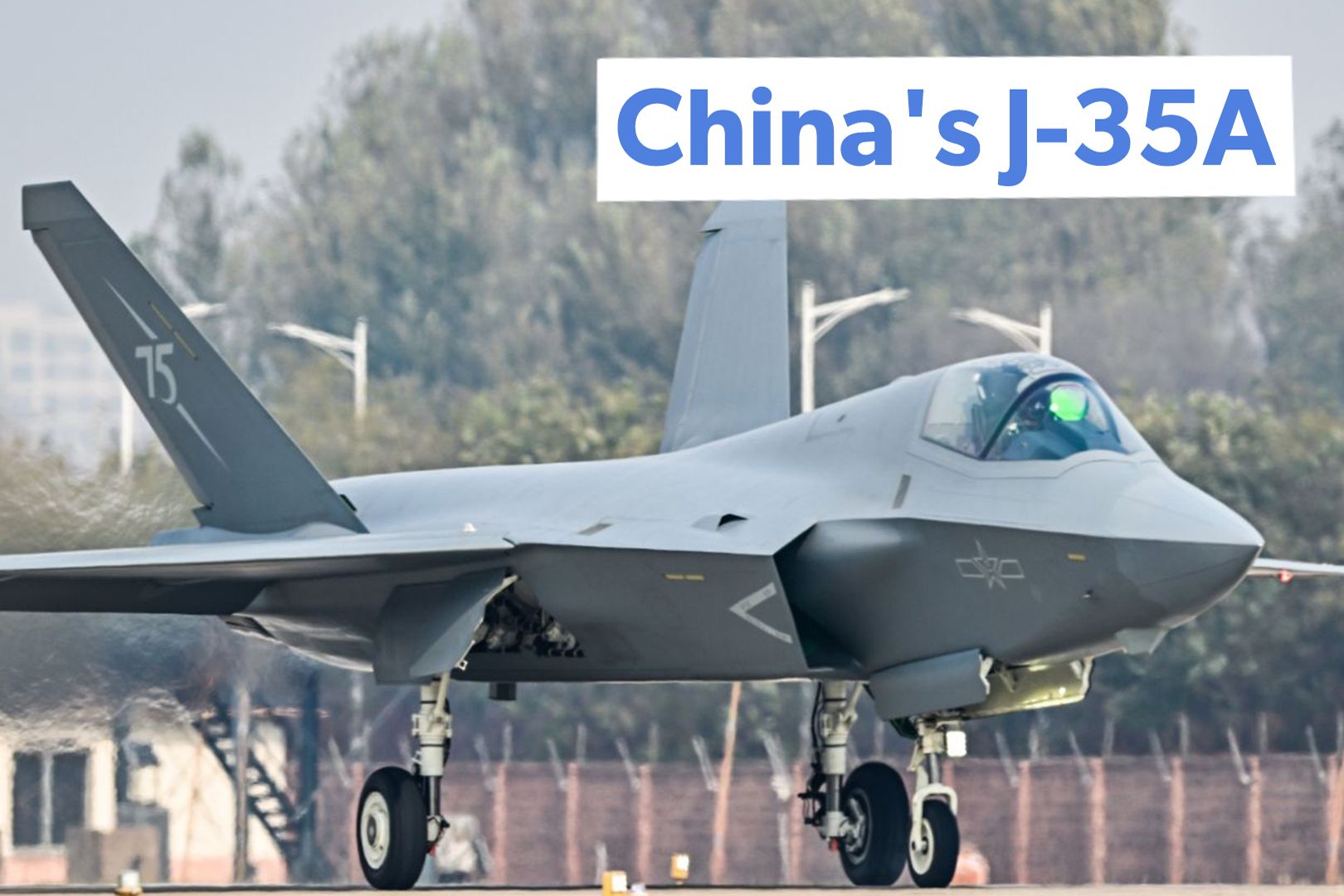
China has now publically unveiled its new Shenyang J-35A fighter jet and offered another glimpse into the Chinese combat aircraft of tomorrow . The jet stems from the J-31/FC-31 Gyrfalcon, which lost the competition to be the stealth fighter of the Chinese Air Force to the J-20 "Mighty Dragon." Undeterred, Shenyang Aircraft Corporation (SAC) continued to develop the jet as a low-end fifth generation fighter for export and to build a naval variant for China's growing fleet of aircraft carriers .
China unveils the J-35A variant of FC-31 The Shenyang J-35A fighter jet is known to have been under development for some time, but previously there was only unofficial and often poor-quality imagery. Now, the world gets a good look at the J-35A. Not only is the jet seemingly named after the F-35A , but it also closely resembles America's flagship fighter.

The first official photo of the J-35A was released ahead of the China International Aviation & Aerospace Exhibition (better known as Airshow China). J-35A/FC-31 Manufacturer: Shenyang Aircraft Corporation (SAC) First flight: 2012 (FC-31), 2021 (J-35A) Type: Stealth multirole fighter Names/Variants: J-35 / J-31 / FC-31 / F-60 / J-21 Country of origin: China The first FC-31 prototype flew in October 2012 (before making its debut at Airshow China in 2014). After that, the FC-31 was thoroughly reworked and greatly refined.
It's unclear if the J-35A is a final iteration of the jet that will see serial production or if more reworkings are to come. It is unclear what the Chinese People's Liberation Army Air Force (PLAAF) plans for it. Variants of the FC-31 are being developed for export and for China's carriers, but time will tell if the PLAAF will also purchase them.
Mockups of the J-35A have been observed on China's aircraft carriers. The FC-31 appears to have been developed as a smaller, more cost-effective complement to the Chengdu J-20. China is beginning to make a splash selling fighter jets internationally.
Egypt is reportedly moving to purchase China's Chengdu J-10C “Vigorous Dragon” fighter jet. Pakistan is known to be interested in purchasing a land-based variant of the J-35A. In a war over Taiwan, most US and Japanese F-35s lost will likely be destroyed on the ground by missiles.
Not an F-35A copy per se While it is known that China has stolen F-35 data, it can't be said that China has just 'copied' one of the world's most complex machines. Instead, as The War Zone puts it, " It can emulate its overall design and knock-off components and certain technologies that it can reproduce and has the data to do so, but the idea that it is a direct copy is blatantly false and a common trope when it comes to comparing foreign military hardware with U.S.
designs ." That isn't to say it isn't possible to copy another nation's aircraft (especially less sophisticated aircraft). After all, the Soviet Tupolev Tu-4 was as close to a perfect reverse-engineered copy of the B-29 Superfortress as one could hope to find (for fear of the Gulag, Soviet engineers took Stalin's order to copy it without alternation, sometimes comically literally).
The War Zone notes some critical outright differences - including the engines (the J-35A has two engines while the F-35A has one). Neither China (which is just beginning to produce its own engines) nor Russia is able to 'copy' the F-35's powerful Pratt & Whitney F135 turbofan engine. Combined Chinese PLAAF & PLANAF (Air Force & Navy) numbers (per DoD ): Total aircraft: 3,150 excl.
trainers and UAVs Combat aircraft: 2,400 (fighters, bombers, attack aircraft, multi-mission tactical) Fourth-generation fighters: 1,300 Total fighters: 1,900 The J-35A is also visibly sleeker and more slender than its American counterpart (partly due to not having a STOVL requirement). Still, The War Zone states, " There are clearly many elements that were at least heavily inspired if not cribbed from the F-35, including its DSI inlets, canopy, and basic configuration ." Even the designation, J-35A, is likely a direct reference to the F-35A.
Anyone can make a mockup (or something that superficially looks similar) to the F-35A, but that doesn't mean it is the F-35A. "Above all else, just because a fighter looks similar doesn’t mean it performs anywhere near the same." - The War Zone The devil of what makes the F-35 the F-35 is in the proverbial detail.
For example, much of the low observability (or stealth) of the F-35 comes from its coating. Much of its lethality comes from its computing systems, communications, sensors, radars, and other avionics. It's in the computer codes onboard the F-35.
China continues to grow and modernize its Air Force while the USAF is shrinking, acquiring fewer though more capable aircraft. Russia's fifth-gen contribution met with ridicule Russia also joined the Airshow China with its new Su-57 Felon fighter jet. Russia sent one flying serial production Su-57 and one prototype Su-57 for static display.
Whereas the J-35A can be seen as a sign of a rapidly modernizing China, the same is difficult to say of the Su-57 for Russia, which appears to be continuing to fall behind US designs. Chinese spectators were able to explore the prototype Su-57, and they mocked the many screws and bolts visible on the supposedly stealthy airframe. While this was a static prototype, it is still a bad look.
Perhaps the Su-57 has drawn so much ridicule over the years because Russia has marketed it as a 5th-generation fighter on par with the F-35. The Su-57 reflects poorly compared to the F-35. On the other hand, as a successor to the MiG-29, Su-27, or other Russian fighter jets, it looks like a major improvement.
While Russia is developing a low-observable Saturn AL-51 engine for its Su-57, it is still unable to integrate it, meaning its existing jets are stuck flying with the old, unstealthy Saturn AL-31 turbofan engine..










